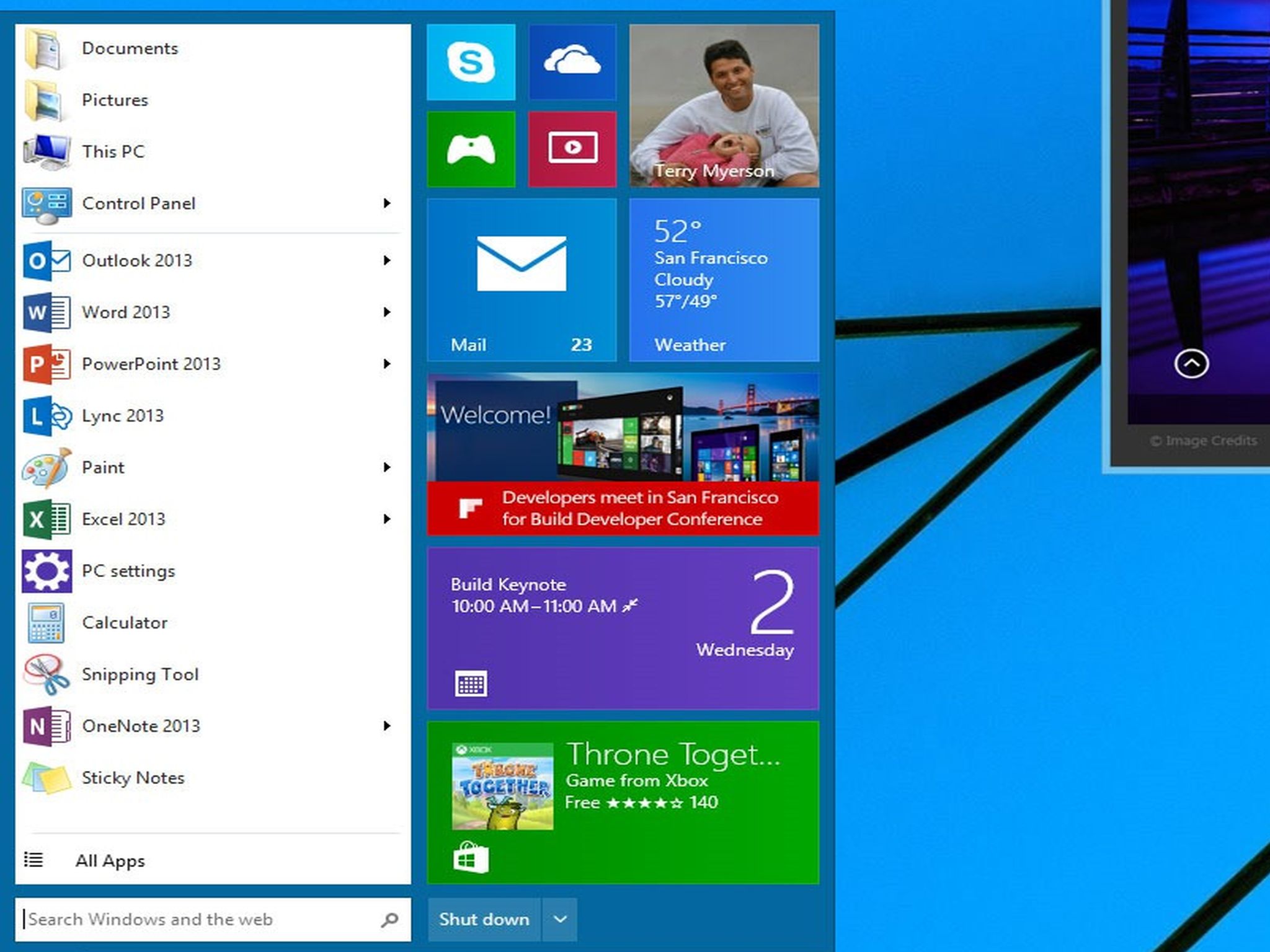- Sep 16, 2011
- 192
- 0
- 0
So, maybe this is painfully obvious but it just occurred to me after reading this article: Classic Windows 7 features make appearance in test builds of Windows 8.1 successor, and looking at this image:

It occurred to me that the new start screen on Windows 9 "Threshold" is basically a Windows Phone screen. Apps, live tiles, hubs (if they hang onto that great idea somehow) and everything else you expect from a WP device in a phone-shaped portrait layout. Instead of swiping right to the app list it's there to the left in the old school Win7 tree, but could be adapted to be more WP8 like (and WP9 being adapted to be more Win7/Win9 like).
Once apps are universal it might present a much more compelling argument for app developers if the tiles concept is synergistic here in Win9 with the WP9 start screen. Wouldn't every weather app developer want a awesome live tile based app that lives on everyone's start menu? Sports? News?
These tiles could replace the old Windows start menu idea of a library with a hub which is extensible and available to app developers. Your old "Photos" library could become the photos hub tile with Instagram and Tumblr hooked into it showing photo updates from social. You could have a "Music" library that's replaced by your favorite music app, Spotify, Beats, iTunes, Xbox Music (ha!) that's constantly updating you on new content or social playlist updates.
I suppose this isn't revolutionary since a similar scenario was partially true for Win8 (few universal apps, no hubs), but if desktop users who weren't spending time on the Metro start screen now start using tiles daily it could change the landscape a lot for Windows Phone and Windows Store apps in general. I think the big requirement will be that launching an app on WP9 from a live tile and launching an app from a Win9 live tile take you into a very similar experience on both devices, just optimized for the different screen size and input methods. Tough to do, but it seems like it would be a big step in making that seamless transition from PC to phone a reality. MS's first party apps would need to lead the way here, something that hasn't been successful so far.
Anyways, anyone have any thoughts? Am I just stating the obvious here or am I missing some more fundamental themes of the "Threshold" strategy? Maybe I'm vastly over simplifying things. Please weigh in.

It occurred to me that the new start screen on Windows 9 "Threshold" is basically a Windows Phone screen. Apps, live tiles, hubs (if they hang onto that great idea somehow) and everything else you expect from a WP device in a phone-shaped portrait layout. Instead of swiping right to the app list it's there to the left in the old school Win7 tree, but could be adapted to be more WP8 like (and WP9 being adapted to be more Win7/Win9 like).
Once apps are universal it might present a much more compelling argument for app developers if the tiles concept is synergistic here in Win9 with the WP9 start screen. Wouldn't every weather app developer want a awesome live tile based app that lives on everyone's start menu? Sports? News?
These tiles could replace the old Windows start menu idea of a library with a hub which is extensible and available to app developers. Your old "Photos" library could become the photos hub tile with Instagram and Tumblr hooked into it showing photo updates from social. You could have a "Music" library that's replaced by your favorite music app, Spotify, Beats, iTunes, Xbox Music (ha!) that's constantly updating you on new content or social playlist updates.
I suppose this isn't revolutionary since a similar scenario was partially true for Win8 (few universal apps, no hubs), but if desktop users who weren't spending time on the Metro start screen now start using tiles daily it could change the landscape a lot for Windows Phone and Windows Store apps in general. I think the big requirement will be that launching an app on WP9 from a live tile and launching an app from a Win9 live tile take you into a very similar experience on both devices, just optimized for the different screen size and input methods. Tough to do, but it seems like it would be a big step in making that seamless transition from PC to phone a reality. MS's first party apps would need to lead the way here, something that hasn't been successful so far.
Anyways, anyone have any thoughts? Am I just stating the obvious here or am I missing some more fundamental themes of the "Threshold" strategy? Maybe I'm vastly over simplifying things. Please weigh in.


